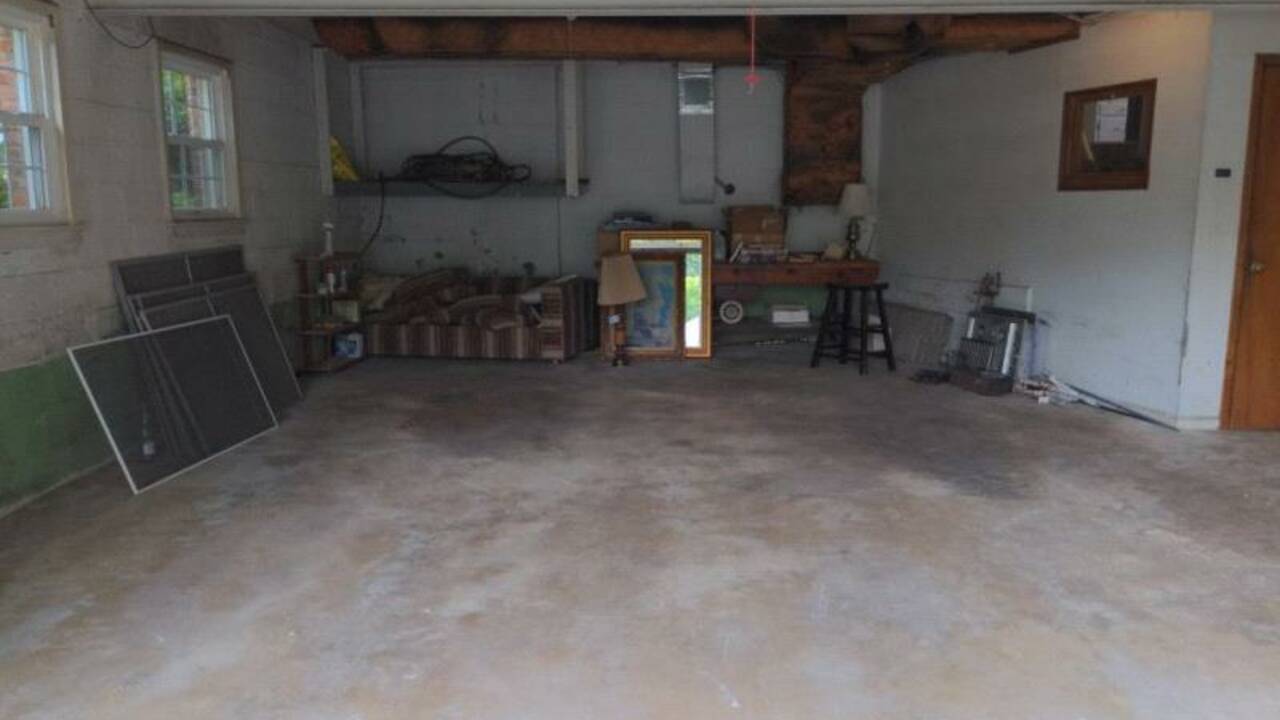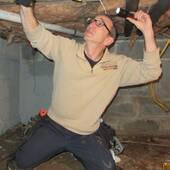Making sure that an attached garage meets fire rating requirements is something that is crucial when performing home inspections in NJ.
Garages that are attached to a home should meet certain fire rating requirements so a fire that starts in the garage will not quickly breach the garage walls and enter the home. Having proper fire rating materials in place can provide the occupants of the home with more time to escape the dwelling in the event of a fire emergency. Vehicles and other flammable materials are typically stored in garage which makes them vulnerable to fire hazards. Another benefit that having a well-sealed garage is that it keeps carbon monoxide migration to a minimum. Carbon monoxide from a combustion motor can be deadly to the home's occupants. Having a properly sealed garage that meets current fire separation requirements can help mitigate the amount of carbon monoxide that moves into the living space allowing the occupants more time to determine a problem exists before it's too late.
One important aspect of the garage fire protection is the door from the garage into the home. Although no specific requirements exists that the door from the garage to the home has to be specifically "fire rated" it has to meet proper fire separation requirements.
The door separating the garage from the home should be 1-3/8 solid wood or a solid or honeycomb steel door at least 1-3/8 inches thick. This door should have a devise that closes the door behind the occupant and should be self-latching. A 20-minute fire rated door would also be fine in this application. Often there is a label on the door that would indicate its fire rating. NJ Home Inspectors should look for this label on the door edge. Under no circumstances should this door open into a bedroom.
NJ home inspectors may also want to look for a raised threshold in between the garage and the home in the door opening. Having a raised threshold will help prevent low lying flammable gas vapors from possibly entering the living space and come into contact with an ignition source in the home. The threshold acts as a partial barrier and is very useful to have in homes.
The area around the door should be properly sealed with gaskets. Having the door tightly sealed will help prevent flammable gas vapors as well as smoke and carbon monoxide from entering the living space. Pet doors or doors with openings should not be installed in between the garage and home. If the door has a glass window, that glass must also be fire rated. It is advantageous to have a solid door. Is there really anything to view from a window into the garage anyway?
Ducts in the garage should be solid and not flexible. Ductwork that enters or passes through the garage should be number 26-gauge sheet steel and have no openings into the garage space. The penetration where the duct enters the garage has to be sealed. This sealing can be accomplished by boxing in the duct work or applying fire rated caulking around the penetration if the penetration is cut tight to the duct work.
There are also very important requirements for attached garage walls and ceilings. The wall separation should be a minimum of 1/2 inch drywall. The ceiling should be 5/8 inch drywall if there is living space above or 1/2 inch drywall if there is no living space above the garage. Common walls between the garage and the home have to meet this 1/2 inch drywall requirement. There should not be any holes or gaps in these common walls. Any holes or gaps should be sealed with 1/2 inch drywall taped and sealed with joint compound to establish an adequate fire separation. There should not be any openings at all in the common fire separation wall. The same thing holds true with a fire separation ceiling. There should not be any holes or gaps at all.
The access opening to the attic should also be fire resistant. Most access doors are made of thin plywood which does not meet the requirements of a fire separation. The garage should be separated from the residence and its attic area by no less then 1/2 in drywall applied to the garage side. The attic access door or hatch must meet the same requirements of a fire separated ceiling. The access to the attic must be permanent and have a sealing mechanism to keep it closed. Any drywall joints should be taped and sealed. There are good attic pull down stair options on the market that would meet these fire separation requirements. I often find thin plywood or unprotected attic pull down stair openings that do not meet these requirements.
All metal pipe and other penetrations should be sealed tight with fire rated caulking. There should be no gaps or openings around pipe of duct penetrations into a garage that is attached to a home. The question is what if there is PVC or PEX piping entering the fire wall of the garage. The answer is to install a fire stop collar around the intersection of the piping and the wall. Fire stop collars are used to maintain a fire separation where PVC or other plastic piping enters through the common wall. These protective collars contain material that expand when exposed to heat leading to an increase of volume of the material. When the plastic penetrating pipe melts the collar will fill the void and block fire and smoke from passing through. Installing these collars is an easy but not very cost-effective way of meeting fire separation requirements when PVC or other plastic piping has to pass through a garage fire separation wall.
There is often confusion when it comes to understanding the fire separation requirements in a garage. NJ home Inspectors should pay close attention and educate their clients on how to improve the fire separation of the garage especially in older homes that may not conform to modern requirements for this separation.
John Martino
LookSmart Home Inspections
NJ Home Inspectors Lic # 24GI00058700
5 Preston Ave
East Hanover, NJ 07936
973 407 9621




Comments(3)